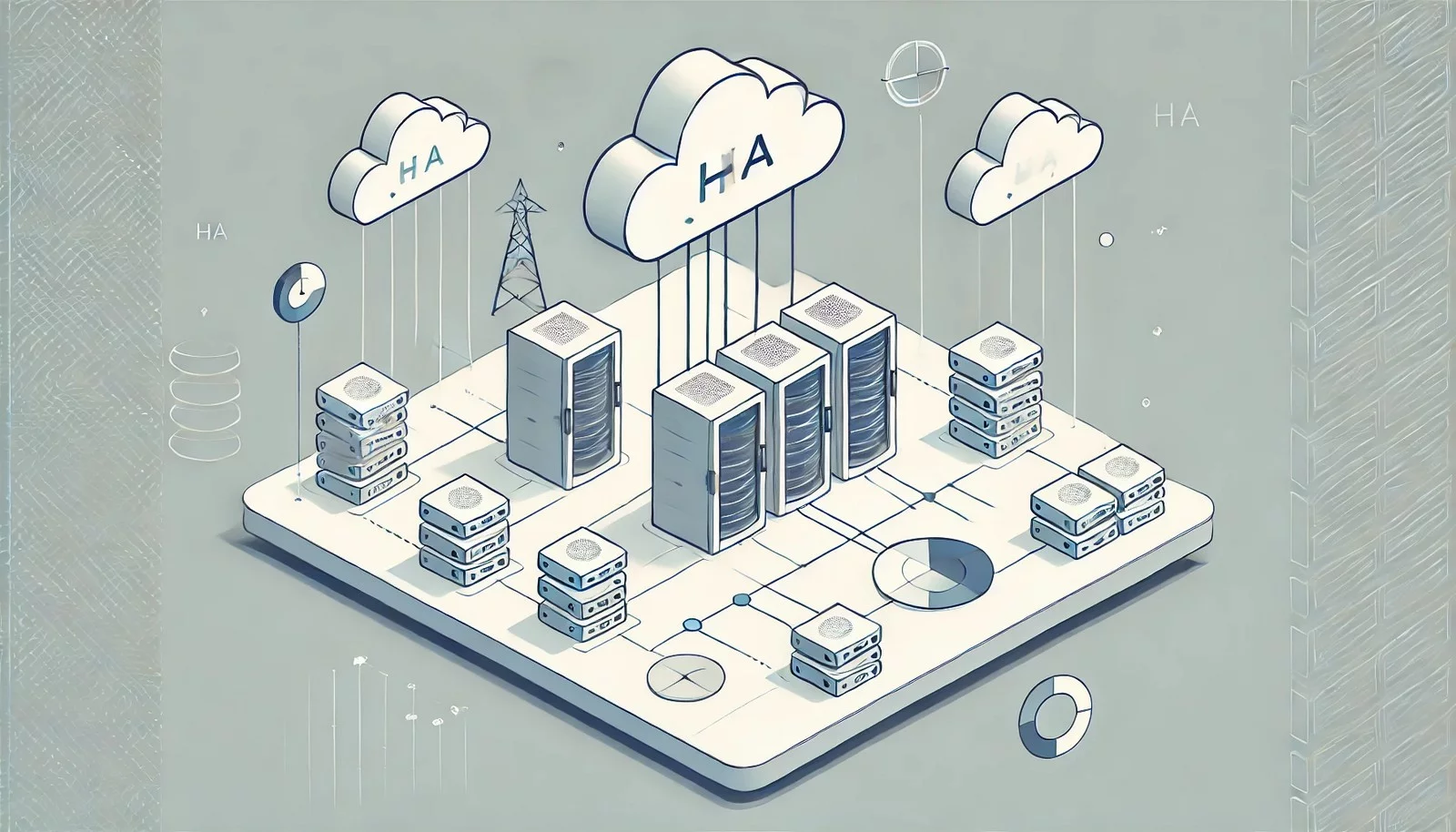High Availability (HA)
 (Representational Image | Source: Dall-E)
(Representational Image | Source: Dall-E)
Quick Navigation:
- High Availability (HA) Definition
- High Availability (HA) Explained Easy
- High Availability (HA) Origin
- High Availability (HA) Etymology
- High Availability (HA) Usage Trends
- High Availability (HA) Usage
- High Availability (HA) Examples in Context
- High Availability (HA) FAQ
- High Availability (HA) Related Words
High Availability (HA) Definition
High Availability (HA) refers to systems or components that are continuously operational for a long period of time. It is achieved by eliminating single points of failure and using redundancy to ensure services remain accessible, even in the event of hardware or software failures. HA systems are designed to quickly recover and maintain performance levels. Technologies like failover clustering, load balancing, and database replication are key in ensuring high availability.
High Availability (HA) Explained Easy
Think about a light bulb that never goes out. If one bulb breaks, another one turns on instantly so the room is never dark. High Availability works like that for computer systems. If something fails, another system immediately takes over so everything keeps running without you noticing.
High Availability (HA) Origin
The concept of High Availability emerged with the need for uninterrupted operations in industries like telecommunications and banking. Early mainframes and server farms focused on building redundancy, and the practice evolved further with cloud computing technologies in the 21st century.
High Availability (HA) Etymology
The term “high availability” stems from the engineering objective of making systems and services highly accessible and reliable, even under failure conditions.
High Availability (HA) Usage Trends
High Availability has seen widespread adoption in cloud computing, financial services, healthcare, and e-commerce. With the growing demand for real-time services, businesses increasingly invest in HA solutions. The rise of microservices and container orchestration platforms like Kubernetes also drives the demand for automated HA systems.
High Availability (HA) Usage
- Formal/Technical Tagging:
- Systems Reliability
- Cloud Infrastructure
- Disaster Recovery - Typical Collocations:
- "high availability server"
- "HA configuration"
- "ensure high availability"
- "high availability clusters"
High Availability (HA) Examples in Context
- Banks deploy high availability systems to keep ATMs running 24/7.
- E-commerce websites rely on HA configurations to handle large traffic during sales events.
- Cloud service providers use HA clusters to avoid downtime during maintenance.
High Availability (HA) FAQ
- What is High Availability (HA)?
High Availability (HA) ensures systems are continuously operational, minimizing downtime. - Why is HA important?
HA reduces downtime, ensuring services are reliable and always accessible. - How is HA implemented?
It is implemented using redundancy, failover systems, and load balancing. - What are common HA solutions?
They include server clustering, redundant storage, and distributed systems. - What industries use HA?
Finance, healthcare, telecommunications, and cloud services are major users. - What is failover in HA?
Failover is the automatic switching to a backup system when the primary system fails. - Can HA be applied in cloud computing?
Yes, cloud services often provide HA configurations for continuous availability. - What are the challenges in HA?
Complex setups, higher costs, and constant monitoring are key challenges. - How does load balancing help HA?
Load balancing distributes traffic evenly, preventing system overloads and enhancing availability. - Is 100% uptime possible with HA?
While HA aims for near-perfect uptime, achieving absolute 100% is extremely difficult and costly.
High Availability (HA) Related Words
- Categories/Topics:
- Systems Reliability
- Cloud Computing
- Disaster Recovery
- Infrastructure
Did you know?
NASA uses high availability systems in its space missions to ensure critical data and communications are never interrupted, even in the most extreme conditions.
Authors | Arjun Vishnu | @ArjunAndVishnu

PicDictionary.com is an online dictionary in pictures. If you have questions or suggestions, please reach out to us on WhatsApp or Twitter.
I am Vishnu. I like AI, Linux, Single Board Computers, and Cloud Computing. I create the web & video content, and I also write for popular websites.
My younger brother, Arjun handles image & video editing. Together, we run a YouTube Channel that's focused on reviewing gadgets and explaining technology.
















Comments (0)
Comments powered by CComment